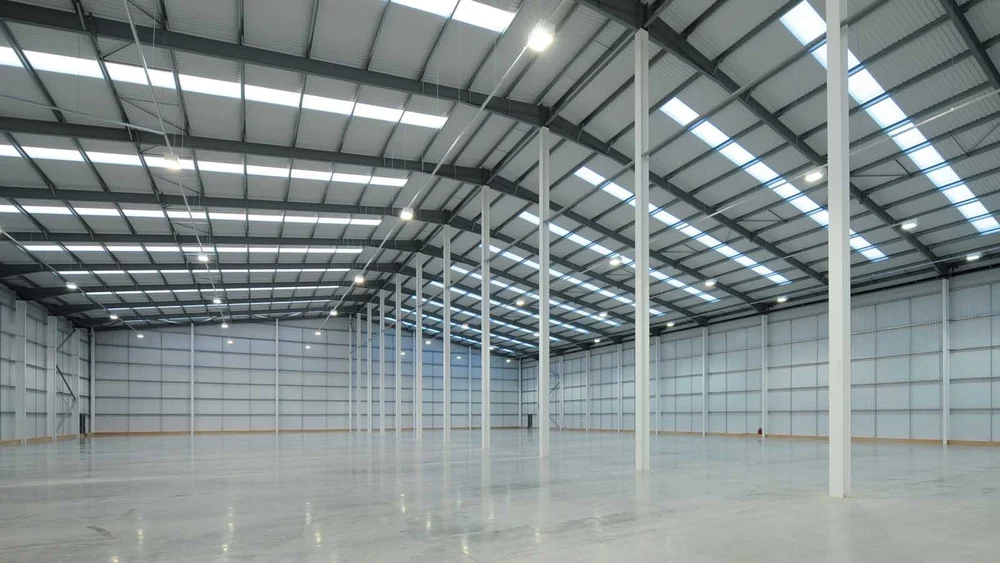In the modern world, technology has emerged rapidly; one example is pre engineered steel buildings, where the overall design is done at the factory. In the process of building PEB structures, the building components that are pre-manufactured at the factory and assembled at an on-site location. Besides, industries have found several benefits of PEB rather than conventional ones.
Pre-engineered buildings (PEB)
Most commercial and industrial sites are implementing this type of construction for different spaces like warehouses, offices, retail spaces, and more. PEB’s are a great thing to implement for several reasons, such as cost-effectiveness, time efficiency, added durability, sustainability, and customizable design options. Pre-engineered buildings are efficiently designed and can be lighter by almost 30%. In addition, it is a cost-effective solution due to less steel requirement in the structural framework, making the erection process faster and much easier. In comparison with conventional steel structures, PEB Steel Structures are mainly formed by standard sections and connections, significantly reducing design and time.
Major Components of Pre Engineered Buildings (PEB)
Here is a list of the major components of a Pre-engineered building that makes the foundation strong:
- Primary Structural Frames
- Secondary Components
- Sheeting & Insulation
- Mezzanine System
- PEB Building Accessories
Primary Structural Frames
Every building needs a solid framework to withstand the vertical and horizontal loads of the whole structure. The structural integrity of the steel frame building should never be in jeopardy. The fundamental frame of pre-engineered steel structures comprises rafters and stiff steel columns together by fittings like flanges.
Rafters are sloped structural components or beams that extend up to the wall plate from the ridge. They are designed to support the roof deck and its associated loads.
Columns in pre-engineered buildings are vertical members that are used to transfer the vertical load to the foundations. These are generally made up of I sections which give benefits in terms of strength while being economical to produce.
Fabricators must ensure that the main structure of the building can endure environmental pressures like corrosion and natural disasters, which is why a great deal of skill goes into its installation. Moreover, recall that the type and size of the pre-engineered steel building will also affect how many primary frames are needed.
Secondary Component
A pre-engineered building’s framing is the most integral to supporting the overall structure. Similarly, the secondary structural frame utilized in a PEB transfers the loads towards the primary framing. The secondary structural frame is mainly constructed using cold formed sections- Purlins, eave struts, Z or C shape girts in different sizes are secondary structural members used to support the wall and roof panels.
Purlins are used on the roof; Grits are used on the walls and Eave struts are used at the intersection of the sidewall and the roof. Additionally, cable bracing in Pre Engineered Steel Buildings is a primary member that ensures the stability of the building against forces in the longitudinal direction such as wind, cranes, and earthquakes.
The primary advantage of these steel frame buildings is to reduce the need for steel to handle the load and make the frame lighter.
Also read: Tips for Hiring a Steel Structure Manufacturer
Sheeting & Insulation
There are several parts to use in building walls and roof panels, such as studs, bottom plates, ridge caps, headers, and top plates. These elements also help protect the building structure from bad weather, leaks, air infiltration, and wind uplift. In this process, sheeting or cladding becomes beneficial.
These covering panels offer access for all purposes to meet the demands of form and function. Typically, galvanizing and color coating the steel sheets give pre-engineered buildings an appealing appearance. The roofing steel sheet is on top of the adequate insulation coils in these buildings.
Metal single skin panels or insulated sandwich panels are one of the most attractive features of a pre-engineered metal building system. These single skin sheets or sandwich panel metal sheets are ideal for agricultural, commercial and industrial buildings and are used for roof and wall cladding, interior roof and wall liners, partition panels, fascia panels, and soffit panels. These profiled metal sheets and insulated sandwich panels are available with design flexibility to suit your design requirements. Higher thermal efficiency and better structural integrity can be achieved with our insulated composite roof and wall panel range.
Mezzanine System
Pre-engineered steel structures are low-density steel frame buildings with a maximum of two intermediate levels and a roof. Furthermore, another element in Pre-engineered steel structures that use steel decks supported by joists onto major beams. Remember that column spacing affects the loads of the mezzanine system. For projects that seek to optimize space for production areas, mezzanine systems are a fantastic choice.
PEB Building Accessories
Pre-engineered steel building accessories may not be crucial to the structure but are crucial to its usability and appearance. The building accessories includes: crane runway beams, fascia, parapets, canopies, and roof extensions, sliding doors, skylights, roll up doors, aluminum windows, louvers, ridges, ventilators to name a few of these accessories.
Conclusion
Above are the foremost components of a PEB that make it strong. These steel structures are unquestionably helpful for a variety of sectors. There are numerous benefits in this form of structure, such as affordability, sturdiness, time-saving, sustainability, and adaptable design alternatives. Choose the leading industrial fabricator in the UAE is Technical Supplies & Services Co., which has decades of expertise in this sector.
